davehuth
Arachnoknight
- Joined
- Dec 24, 2017
- Messages
- 278
This spring, a Pileated Woodpecker was giving a lot of attention to a dead pine standing in my front yard (I live in western NY, USA). While walking my dog I went over to check it out to see if the bird was excavating for a nest, and saw that it was just really into making a lot of foraging holes. Wondering what it was after, I pulled off a long strip of bark and a rain of giant grubs fell out like a slot machine!

I poked around some more and gathered up about 20 L2/L3 larvae, and also about 10 pupal cells
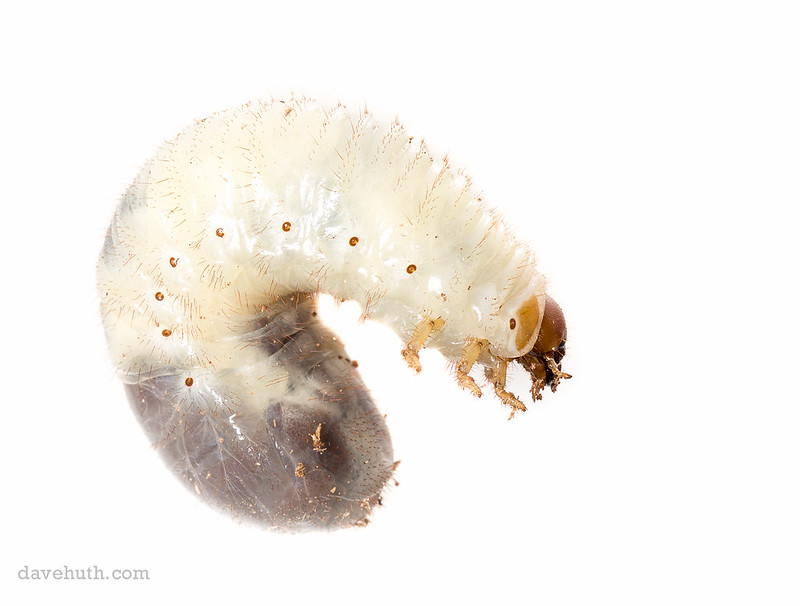

I kept the pupal cells in a separate container where I could watch for eclosure, but I prepared a luxury condominium for the larvae. I had an XL Kritter Keeper that I more than half filled with pulverized wood from the tree where I found them, and just plopped them in. My plan was to keep the wood substrate slightly moist and just add adults as they eclosed (I had beetle jelly cups all ready) – and try to get an ongoing culture started. Based on advice I got on an online forum, I figured I'd have to sift and replace the substrate 3 times a year or so, and I was eager to see how it went! (I also liked watching for the larvae whenever they burrowed close to the plastic sides of the tank).
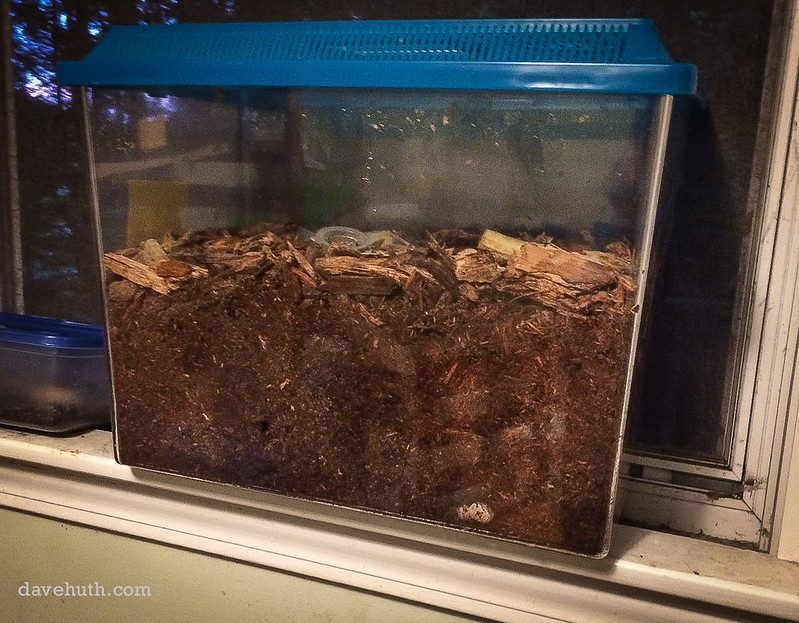
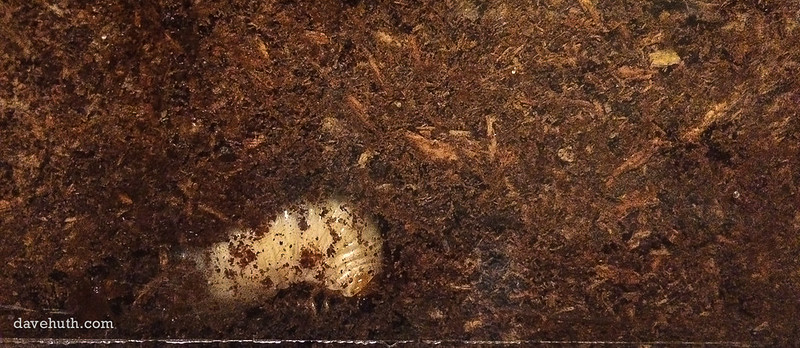
Unfortunately, I accidentally broke open one of the cells. I could see that inside the larva wasn't even fully pupated yet, just in its pre-pupal state. Everything I read said that the grub could never survive this, but it continued to squirm, and even squirmed out of the capsule. About 1/3 of the pupal capsule was missing, so I replaced the larva, and covered the opening with a moist leaf.
After a few days the larva had pupated! And it continued to be feisty. Whenever I took off the leaf cover, it thrashed about, and even ejected itself from the capsule a couple of times. I thought this must be some kind of superhero grub. Once when it flipped itself out, I took some photos.
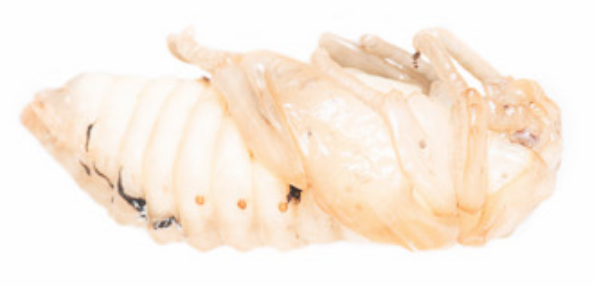
I still was doubtful that this was survivable. You can see there was some discoloration on the pupal abdomen. I figured it was doomed, but it was so active I didn't have the heart to euthanize. I decided to just wait and watch.
Eventually the feisty pupa slowed its movements, darkened, and eclosed!
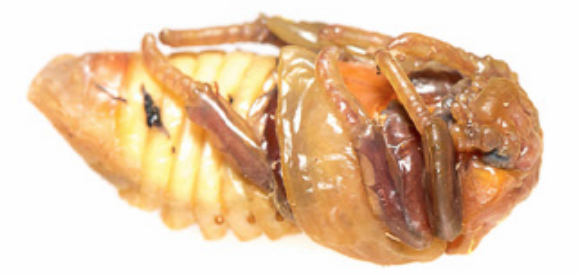

It still didn't look quite right of course, because for many scarabs, eclosure happens within the pupal cell. After the elytra darken and harden and everything is a-ok, then the adult beetle chews its way out. But this beetle was finishing its metamorphosis by dragging itself across the surface of the substrate. It struggled with the uneven chunky surface, so I placed a piece of bark inside for it to haul itself up on.

Not much about this raggedy looking guy seemed right, but soon it buried itself in the substrate and I didn't see it for a while.
Days later, it popped back up to the surface, and began marching around, looking just like it was supposed to. What a tough little monster.
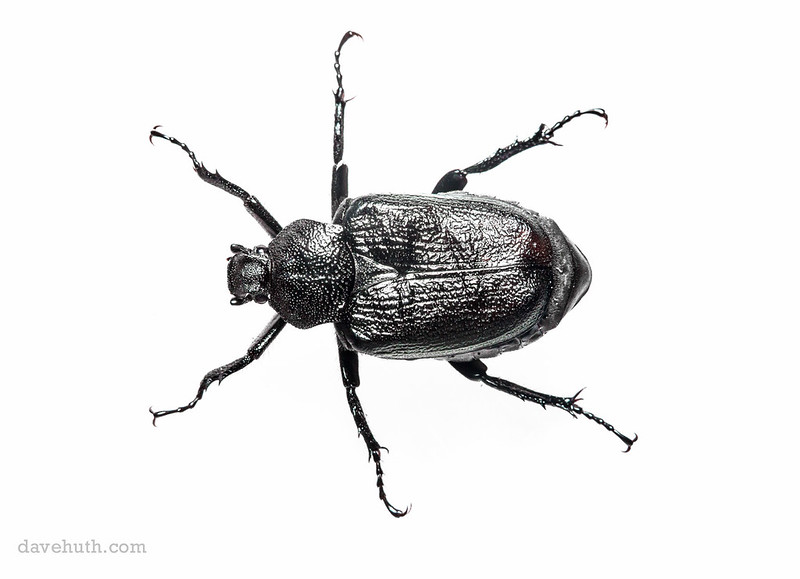
From May through June the rest of the pupal cells eclosed without incident. I seemed to get a good mix of males and females, as mating began right away, and the adults have been burrowing deep through the substrate, and surfacing every now and then to snack on a banana or jelly cup. The adult lifespan seems short, as a couple beetles have begun to die, I estimate at about 6 to 8 weeks from eclosure.
I don't know exactly what's happening deep in the substrate after a few months of this adventure, but once the adults stop appearing I'll give any eggs another month or two to hatch, and then change out the substrate to see what I've got!
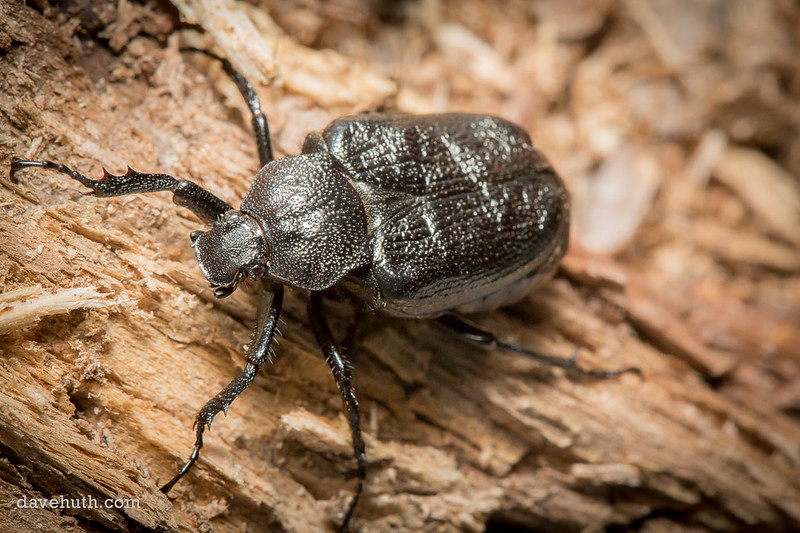
The Rough Hermit Flower Beetle (Osmoderma scabra) has proven to be a fun and easy species to keep. I have lots more to learn about the life cycle and behavior of this cool species, but so far it hasn't seemed to need much more than normally fluctuating room temperatures, some well decomposing, slightly damp (and kind of deep) wood substrate, and to be ready for adults whenever they might show up.
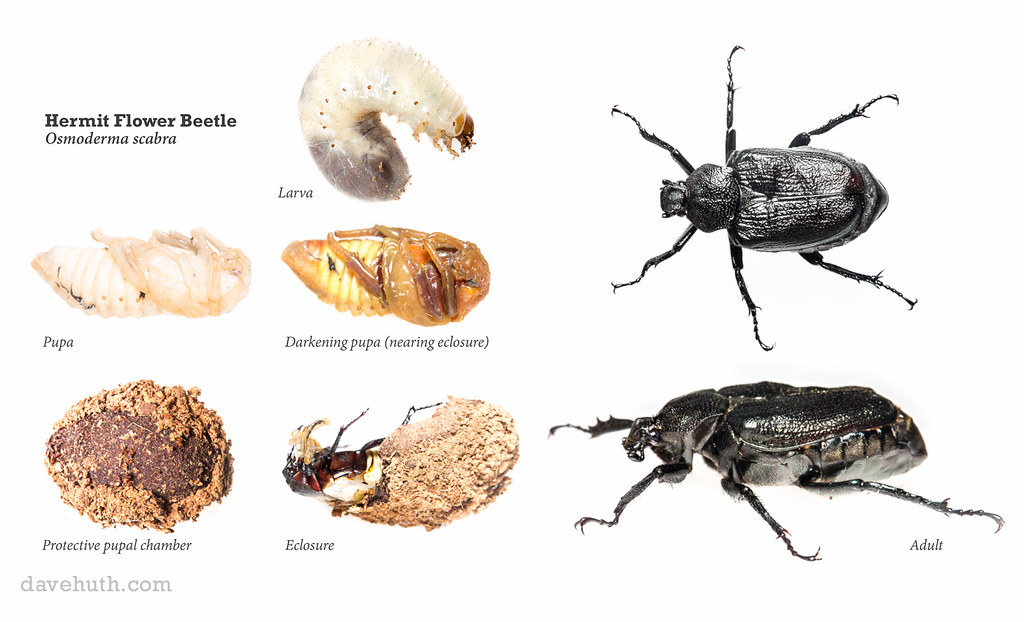

I poked around some more and gathered up about 20 L2/L3 larvae, and also about 10 pupal cells


I kept the pupal cells in a separate container where I could watch for eclosure, but I prepared a luxury condominium for the larvae. I had an XL Kritter Keeper that I more than half filled with pulverized wood from the tree where I found them, and just plopped them in. My plan was to keep the wood substrate slightly moist and just add adults as they eclosed (I had beetle jelly cups all ready) – and try to get an ongoing culture started. Based on advice I got on an online forum, I figured I'd have to sift and replace the substrate 3 times a year or so, and I was eager to see how it went! (I also liked watching for the larvae whenever they burrowed close to the plastic sides of the tank).


Unfortunately, I accidentally broke open one of the cells. I could see that inside the larva wasn't even fully pupated yet, just in its pre-pupal state. Everything I read said that the grub could never survive this, but it continued to squirm, and even squirmed out of the capsule. About 1/3 of the pupal capsule was missing, so I replaced the larva, and covered the opening with a moist leaf.
After a few days the larva had pupated! And it continued to be feisty. Whenever I took off the leaf cover, it thrashed about, and even ejected itself from the capsule a couple of times. I thought this must be some kind of superhero grub. Once when it flipped itself out, I took some photos.

I still was doubtful that this was survivable. You can see there was some discoloration on the pupal abdomen. I figured it was doomed, but it was so active I didn't have the heart to euthanize. I decided to just wait and watch.
Eventually the feisty pupa slowed its movements, darkened, and eclosed!


It still didn't look quite right of course, because for many scarabs, eclosure happens within the pupal cell. After the elytra darken and harden and everything is a-ok, then the adult beetle chews its way out. But this beetle was finishing its metamorphosis by dragging itself across the surface of the substrate. It struggled with the uneven chunky surface, so I placed a piece of bark inside for it to haul itself up on.

Not much about this raggedy looking guy seemed right, but soon it buried itself in the substrate and I didn't see it for a while.
Days later, it popped back up to the surface, and began marching around, looking just like it was supposed to. What a tough little monster.

From May through June the rest of the pupal cells eclosed without incident. I seemed to get a good mix of males and females, as mating began right away, and the adults have been burrowing deep through the substrate, and surfacing every now and then to snack on a banana or jelly cup. The adult lifespan seems short, as a couple beetles have begun to die, I estimate at about 6 to 8 weeks from eclosure.
I don't know exactly what's happening deep in the substrate after a few months of this adventure, but once the adults stop appearing I'll give any eggs another month or two to hatch, and then change out the substrate to see what I've got!

The Rough Hermit Flower Beetle (Osmoderma scabra) has proven to be a fun and easy species to keep. I have lots more to learn about the life cycle and behavior of this cool species, but so far it hasn't seemed to need much more than normally fluctuating room temperatures, some well decomposing, slightly damp (and kind of deep) wood substrate, and to be ready for adults whenever they might show up.

Last edited:
